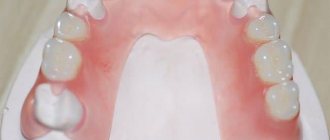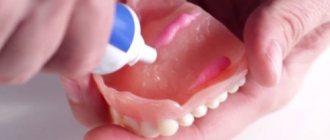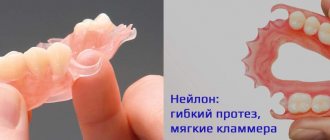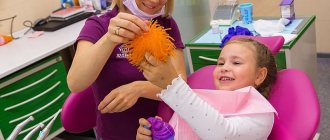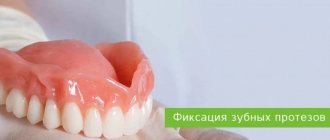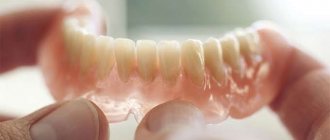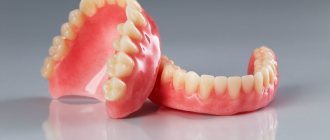What is Chlorhexidine used for?
An aqueous solution is prescribed to be taken in the following cases:
- cervical erosion;
- for the prevention of syphilis, genital herpes and other vaginal diseases;
- disinfection of dentures, disinfection of wounds;
- various diseases of the oral cavity.
An alcohol solution is used to treat hands and medical devices before surgery. The solution is also used to treat the working surface of medical equipment.
Vaginal suppositories are effective for the following conditions:
- in order to prevent infections that can be transmitted as a result of unprotected sexual intercourse;
- bacterial vaginosis;
- prevention of inflammation and infections before surgery, childbirth or abortion.
How to rinse your mouth?
To rinse the mouth, only an aqueous solution is used - this point should be taken into account when purchasing the drug at the pharmacy. The concentration of the drug is 0.05%. Some, trying to achieve the maximum therapeutic effect, begin to rinse their mouth too often - up to 6-10 times a day. This approach is completely unjustified and can harm a person, since rinsing too often can cause irritation of the mucous membranes and dislodge the blood clot, which protects the exposed bone from the penetration of microbes.
"Chlorhexidine" in the form of a solution
To ensure therapeutic and prophylactic results, it is enough to perform the procedure 2 times a day after morning and evening brushing of teeth. If your gums are prone to bleeding, you can add one more rinse, but the total number of procedures per day should not exceed three.
Video: How to rinse your mouth with chlorhexidine
How to rinse your mouth correctly
Mouth rinsing with Chlorhexidine is carried out according to the following scheme:
- brush your teeth;
- after an hour, rinse your mouth and throat with boiled water at room temperature to remove dirt and food debris;
- take a small amount of the drug into your mouth and hold for 2-3 minutes;
- Carefully spit out the product, avoiding swallowing.
The duration of treatment is from 7 to 12 days.
You just need to keep the product in your mouth
Important! "Chlorhexidine" after tooth extraction can only be used for oral baths. The product must be kept in the mouth, it is allowed to tilt the head slightly to the sides, but you cannot move the cheeks and tongue, as this creates a vacuum in the mouth and can lead to the loss of a blood clot.
How to use Chlorhexidine in gynecology
The product is actively used to prevent sexually transmitted diseases. No later than 2 hours after unprotected intercourse, you need to take the solution. Men will need to insert 2 ml into the urinary canal, and women will need to insert 2 ml into the urinary canal and another 5-7 ml into the vagina. It is recommended to wipe the skin around the genitals with the solution. The instructions say that after using the drug you need to wait 2 hours before urinating. Otherwise, the effect of use will be less.
For preventive purposes, vaginal suppositories can be used.
Before using the product for thrush and other gynecological pathologies, you should consult a specialist in advance.
Why do you need Chlorhexidine: properties and action
After a tooth is removed, an open wound remains in the gum and fills with blood. A blood clot forms in the hole, protecting the open area of the periosteum from the penetration of pathogenic bacteria and microbes. If the clot does not adhere tightly to the socket or is accidentally damaged during eating, the risk of infection of the bone tissue and the development of osteomyelitis of the jaw increases - a purulent-inflammatory pathology, which, if not treated in a timely manner, can lead to the death of bone structures (osteonecrosis).
And this is how a blood clot may look in real life - it is very important not to wash it out when rinsing your mouth
To avoid damaging the clot, the following recommendations must be followed:
- in the first 1-2 days after removal, you should not drink through a straw, spit saliva, or perform other actions that create a vacuum in the mouth;
- You can chew on the side on which the removal took place 72 hours after surgery;
- You need to rinse your mouth carefully, trying not to make too active movements;
- Do not touch the clot with your tongue or try to remove it from the hole.
Another common complication after tooth extraction is alveolitis. This is a disease in which inflammation of the socket occurs. The pathology is accompanied by fever, severe pain, which can radiate to the ear, eye area, jaw and cervical and submandibular lymph nodes. The gums at the extraction site swell, and severe swelling and redness appear.
- How to rinse your mouth with Chlorhexidine for gum inflammation
Development of alveolitis in the socket after tooth extraction
The main cause of alveolitis is non-compliance with the hygiene regime and an increase in the number of pathogenic flora in the oral cavity. Pathogenic microorganisms entering the alveoli cause inflammation of soft tissues and the development of a pathological process. To prevent alveolitis and other possible complications, the patient is prescribed local treatment of the oral cavity with antiseptic solutions, one of which is Chlorhexidine. The use of this drug ensures disinfection of the mucous membranes and hard tissues of the tooth and prevents the development of infectious and inflammatory processes.
Tooth extraction is a full-fledged surgical operation.
Video - “Chlorhexidine”: application and effectiveness
Contraindications and adverse reactions
Taking the drug is contraindicated in the following cases:
- increased susceptibility to the components included in the composition;
- patients with dermatitis;
- simultaneous use with other antiseptics, for example, hydrogen peroxide;
- in ophthalmology for washing the eyes.
It is better to refrain from using the product to disinfect the surgical field before or after surgery on the central nervous system and auditory canal.
In pediatrics, the drug is used with great caution.
Some patients may experience undesirable reactions such as:
- dry skin;
- allergic skin rashes;
- itching of the skin;
- light sensitivity.
With prolonged use of the product in dentistry, changes in taste may occur, tartar may appear, or teeth may become stained.
How does the product work?
"Chlorhexidine" for sore throat and other diseases characterized by inflammation of the oropharynx is one of the most effective drugs. It's all about its bactericidal and fungicidal effect.
The benefits of using the drug have been confirmed in laboratory conditions. For the experiment, we took a regular 0.05% solution of the drug. The tests were carried out at room temperature (+22 °C).
The result was as follows:
- Death of bacteria - after 1 minute of exposure.
- The death of fungal organisms occurs after 10 minutes of exposure.
Moreover, it is noted that as the ambient temperature increases, the effectiveness of the solution begins to increase. For example, already at 40-50 degrees (the temperature of the liquid at which comfortable rinsing of the oropharynx is possible), the exposure time is almost halved!
This means that it is enough to hold the solution in your mouth for about 30 seconds to eliminate all harmful microorganisms living there. How to achieve a fungicidal effect (against fungal creatures)? After the procedure, it is important to abstain from drinking and snacking for a while.
What is more effective against coronavirus – chlorhexidine, miramistin or hydrogen peroxide
Chlorhexidine and Miramistin are antiseptics that many consider to be analogues. In fact, these drugs differ in the active substance: for Chlorhexidine it is chlorhexidine bigluconate (a salt of gluconic acid), and for Miramistin it is benzyldimethyl [3-(myristoylamino)propyl] ammonium chloride monohydrate.
As a result of experiments to determine the MIC (minimum inhibitory concentrations) of various antiseptics against test cultures of human coronaviruses in vitro, it was found that Miramistin is 5 times more effective than chlorhexidine (Table 1).
But it is not advisable to use Miramistin instead of chlorhexidine - it is 20 - 30 times more expensive. In addition, it is not intended for use on hands.
Hydrogen peroxide is an antiseptic for external use, known for its powerful oxidizing properties. It destroys the lipid membranes of cells, so it is suitable for fighting coronavirus.
Hydrogen peroxide is a cheap and effective antiseptic against the COVID-19 virus. Unlike chlorhexidine, it has a short-term effect rather than a prolonged one (up to 4 hours). It is very aggressive towards the skin, so it can only be used to disinfect objects with surfaces made of non-porous materials.
A three percent solution of hydrogen peroxide can be used to disinfect surfaces and prepare skin disinfectants with your own hands.
During pregnancy and breastfeeding
"Chlorhexidine" is indicated for use by women during pregnancy and breastfeeding, but only if the patient does not have open wounds or cuts in her mouth. The drug has a superficial effect and is not absorbed into the blood or breast milk.
When breastfeeding, the drug can also be used
For small patients, the preferred form is a spray - it does not require rinsing skills to use. With its help, you can easily treat any areas of the oral mucosa. However, Chlorhexidine should not be used on children under 3 years of age, in particular for irrigating the tonsils. In both cases, the maximum permissible course duration should not exceed 10 days, and the use of the drug must be agreed with a doctor.
How to make hand sanitizer with chlorhexidine with your own hands
Making an antiseptic with chlorhexidine, which can replace a purchased sanitizer, is simple at home: you need to thoroughly mix all the ingredients, then pour the resulting solution into an easy-to-use bottle with a dispenser or sprayer.
Recipe No. 1 – with vodka and lavender essential oil
- Chlorhexidine 2% – 1 tbsp. spoon
- Vodka – 5 tbsp. spoons
- Water – 1 tbsp. spoon
- Lavender essential oil – 5 teaspoons
Recipe No. 2 – with alcohol and glycerin
- Medical alcohol – 100 ml
- Chlorhexidine 0.05% – 30 ml
- Glycerin – 10 ml
Features of use for various diseases
Most often, gargling with a solution of Chlorhexidine is indicated for sore throat. The medicine here fights a large number of pathogens. Moreover, the manual for the product notes that bacterial resistance (addiction) does not develop to it.
When treating tonsillitis, it is also recommended to gargle with the drug at least three times a day. However, treatment should not be continued for more than a week - Chlorhexidine changes the color of tooth enamel, which we will discuss later. If it is necessary to continue the course of rinsing, it is best to replace it with a similar drug.
Side effects
Now you are familiar with the instructions for using “Chlorhexidine” for rinsing. You also need to know about some unpleasant effects of the drug:
- Darkening of tooth enamel. Note that the effect is temporary, but can deprive the smile of its aesthetic appeal for some time.
- The appearance of deposits on tooth enamel. Such a negative effect can only be achieved with frequent systemic use of rinses.
The use of the drug does not have a serious negative impact on human health and life. Cases of side effects are so unlikely that they are not even described in the instructions for Chlorhexidine. This is what made it the most common antiseptic.
How to treat your hands with chlorhexidine to prevent coronavirus infection
Before communicating with your loved ones after being outside, visiting a store, traveling on public transport, or contacting a sick person or a possible carrier of the COVID-19 virus, you should:
- Wash your hands with soap as indicated in these pictures:
- Turn off the tap using a napkin or your elbow.
- Dry your hands with a disposable towel.
- Apply 3-5 ml of chlorhexidine solution to the palm of your hand and distribute it over the entire surface of the brushes with rubbing movements for 20-30 seconds (until completely absorbed). Particularly carefully treat the areas between the fingers, around and under the nails.
- Disinfect faucets, door handles, floors, shoes. You can make a disinfectant with your own hands - for example, a solution of hydrogen peroxide (per 10 liters of water - 1 glass of peroxide), "Belizna" (5-6 caps of product per 10 liters of water) is excellent for washing floors.

